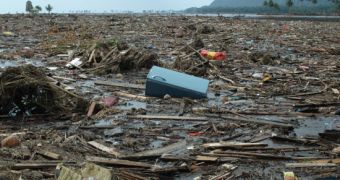While local authorities and high officials are busy doing some damage control in the areas struck by hurricane Sandy, several environmental scientists saw fit to investigate how beaches in the eastern US would be affected by this major storm.
Hurricane Katrina ended up transporting considerable amounts of harmful chemical compounds and debris into American waters.
Therefore, specialists fear that considerable amounts of pesticides, fertilizers and plastic waste will once again be “fed” into the country's surrounding marine ecosystems by the receding floodwaters.
As well as this, concerns have been raised with respect to how a so-called “toxic soup” now found on the streets of several major urban areas will impact on public health. Our Amazing Planet quotes Doug Journey, a senior scientist presently working with the US National Wildlife Foundation, who made a case of how, “There's a great deal of pesticides and fertilizers, as well as urban residue and runoff, all of which puts a lot of chemicals into the water.”
Furthermore, “All of the pollution will attach to sediments and settle out when it reaches large bodies of water.”
According to these specialists in environmental sciences, American beaches along the Northeast and the Mid-Atlantic region face the most risks, meaning that polluted sediments could cover marine life and sometimes even drown it.
While some of these harmful chemical compounds are simply washed off the pavement by the receding waters, others leak out from fuel tanks and damaged containers.
Green-oriented group Riverkeeper commented on the Frankenstorm's impact on the environment as follows:
“The impact of Sandy’s storm surge is enormous, causing widespread pollution of the Hudson River and New York Harbor by a variety of toxic chemicals, including petroleum and fluids from cars and boats; contaminants from flooded subways, roads, parking lots and tunnels; and contaminants washed from shoreline industrial sites, as well as commercial and residential buildings.”

 14 DAY TRIAL //
14 DAY TRIAL //